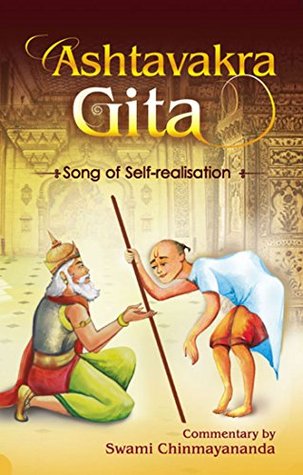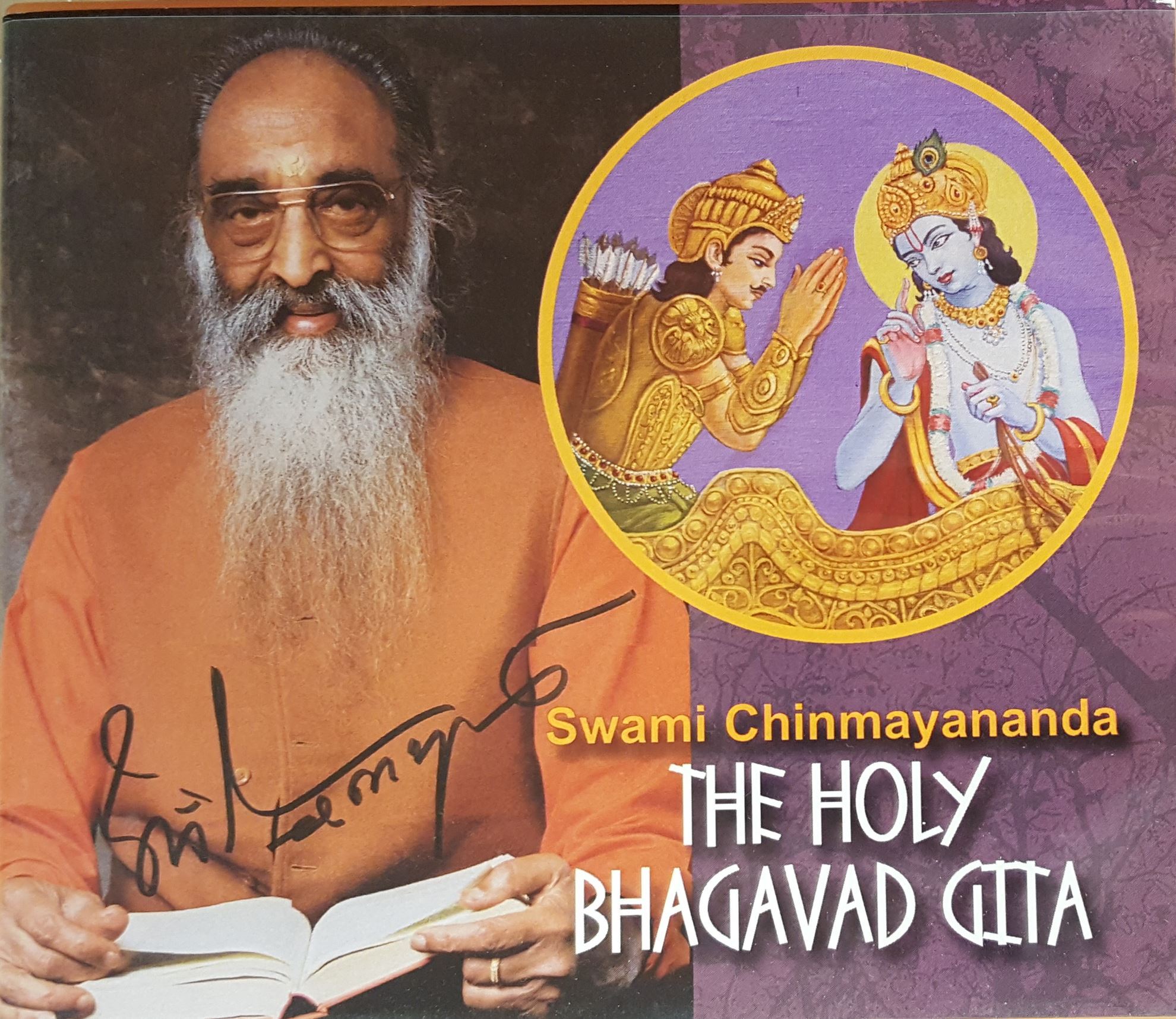The Three Principles
By Swami Chinmayananda
To realize our full spiritual Nature is to experience the fullness of life. As long as we have not attained this state of being, our intellect will continue to suggest methods for overcoming feelings of imperfection, which manifest as desires. Desires are nothing but an expression of the ignorance of our real Nature. This ignorance has made us identify with body, mind and intellect, and is the cause of our egocentric life of pains and limitations. Therefore, there is no achievement more sacred and glorious than the realization of our true identity with the unlimited, eternal Self.
The purpose of religion is to eliminate ignorance through spiritual practices until the devotee comes to gain the light of wisdom. Ignorance, manifesting as desires on the mental plane, extend themselves as actions in the world. Therefore, spiritual masters advise that the most practical way of overcoming ignorance is through controlling our actions. They suggest that we first purify, and regulate these actions. All religions advocate qualities such as goodness, kindness, tolerance, mercy and selflessness. They insist on moral and ethical perfection as the fundamental condition for spiritual evolution. Without these qualities we will end up far short of the goal, even after a lifetime of devotion and worship.
Let us try to understand the scope of these moral and ethical values as explained in Hinduism. The three corner stones upon which the temple of Hinduism has been built are self-control, non-injury and truthfulness. The vast amount of spiritual literature in India is nothing but annotations, amplifications and commentaries upon these three principles. Ancient Indians planned their individual, communal and national life upon these three fundamental duties.
When these values are practiced they enable us to master our mind, which leads to mastery over ourselves, and the world around us. Although these principles are essentially the same in all religions, differences may appear due to the way in which they were presented to meet the needs of the people of the time. These three moral codes of behavior are: self-control (brahmacharya), non-injury (ahimsa), and truthfulness (satyam). They are the source of all values, and refer to the three layers of our personality: physical, emotional and intellectual.
March 18, 2020 ASHTAVAKRA GITA CHINMAYANANDA PDF Authored by Maharishi Vyasa, this lucid dialogue between Rajarshi Janak and Astavakra systematically deals with mystical experiences of the spiritual reality. Ashtavakra Gita by Swami Chinmayananda, available at Book Depository with free delivery worldwide. The Holy Geeta, a modern Commentary on Srimad Bhagawad Geeta, by Swami Chinmayananda is one of the most sought after commentaries of the Bhagavad Gita. Now, Chinmaya Mission UK is providing an opportunity to download the Holy Gita with Commentary of Swami Chinmayananda for free. Holy Geeta by Swami Chinmayananda 2 General introduction To Bhagawad Geeta IF THE Upanishads are the text-books of philosophical principles discussing man, world and God, the Geeta is a hand-book of instructions as to how every human being can come to live the subtle philosophical principles of Vedanta in the actual work-a-day world.
Self Control
The physical body longs for contact with the world of objects in order to gain sense gratification. The eyes wish to see beautiful forms and colors, the tongue craves good food, the nose likes to smell pleasant fragrances and so on. But when we continue to live only for the gratification of our sensual demands, passions multiply and ultimately consume us. To avoid such a condition, discipline (brahmacharya) at the physical level is prescribed. The meaning of the word brahmacharya has been so badly distorted that the real value of this discipline has been lost. Brahmacharya is an attitude of intelligent contact with the world. It does not mean a total denial of the sense enjoyments, but only insists on not overdoing anything. Thus to read, watch television, talk, or walk too much, or to eat a morsel more than necessary would be considered as breaking the vow of brahmacharya. When we live in self-control we discover in ourselves a renewed dynamism, and become pillars of strength in society. If this sacred doctrine is not followed, we abdicate our freedom and become slaves to the ever-changing circumstances of life. Thus, brahmacharya is a value to be lived at the physical level.
Non-Injury
The second discipline, prescribed for the mental level, is non-injury (ahimsa). Ahimsa does not simply mean non-killing or non-injury at the physical level. It is to be understood as a mental attitude regarding our relationship with others. Non-injury is the spirit that should dominate the realm of our motives. Sometimes it is necessary that our actions be cruel although the underlying motive is totally loving and kind. Shakespeare beautifully expressed this idea in Hamlet, “I am cruel only to be kind.” For example, a surgeon may outwardly appear to be cruel while performing an operation but is motive is honorable. Such actions, though causing physical pain, would be considered as ahimsa. Non-injury is not a passive ineffectual attitude. Restraining the wicked to protect the good is the very creed of every true Hindu.
Thus, non-injury as advised by the architects of the Hindu culture is a value of life to be applied at the level of our motives. Our motives should be blessed and pure without any cruelty or hatred. In the execution of a pure motive, we may have to weed out the thorny shrubs to make the garden beautiful again.
Truthfulness

Satyam or truthfulness is the means to govern our inner world of mind and intellect. The outer world is a great university providing us with innumerable opportunities from which to learn. When these experiences have been well churned in our mind and the intellect has come to a firm decision, we must have the honesty and conviction to act upon it. When we do not make the full use of our mind and intellect, they lose their efficiency and we suffer as a result. Religion constantly reminds us to exercise our mind and intellect through its insistence upon the principle, “Be truthful to your previously gained wisdom.”
Thus, truthfulness enjoins us to live according to our intellectual convictions. We all have ideals, but we often fall prey to our senses and compromise with them. This is dishonest living. Our dignity depends on our ability to live up to our convictions at all times.
The edifice of life stands on these three great principles. By following them we can integrate our personality and gain inner health. It is by this method alone that we can enjoy living in the world and develop the strength and courage to overcome all our problems in life.
When a person has learned to live in perfect self-control, ever vigilant to gather knowledge from life’s experiences, practicing non-injury in his motives, and being truthful to his convictions, he becomes the chosen child of nature to be lifted to the top of the evolutionary ladder.
It is true, no doubt, that there are only a few in society who practice these great principles, but those few grow to such a stature that they lead the world with an irresistible spiritual power. It is these people of heroic personality, with integrated head and heart who will continue to guide humanity to new levels of spiritual evolution.
Vivekachudamani - Arsha Bodha Center
Having written pioneering and monumental commentaries on triple cannon prasthanatraya comprising the Upanishads, Bhagavad Gita and Brahma Sutras, Sankara also composed several sub-texts in simple Sanskrit, called prakaranagranthas philosophical treatises , with a view to reaching the message of Vedanta to common people. The Vivekachudamani, as its name signifies, is the crown jewel of such prarkarana texts. The Question of Authorship of Vivekachudamani On grounds of style and terminology, some modern scholars have disputed the authorship of Vivekachudamani as ascribed to Sankara. Comans , p. He also finds the verses commending the nirvikalpasamadhi at variance with the minimal importance Sankara gives to samadhi practices in his other works. He concludes that Vivekachudamani is more than likely to be a composition of some later Sankaracharya, perhaps connected to the Sringeripitham. Alston believes that the references to the bliss of the Brahmanwhich occur in nearly a fifth of the verses of Vivekachudamaniare quite sparse in UpadeshaSahasri.
Viveka Chudamani (Part 1 of 8 ) Pravachanam By Sri Chaganti Koteswar Rao
Chinmaya International Foundation. Agnavadai Parani with Swanubhuti Commentary by Swami Swaroopananda · Article Mathematics In Vivekachudamani Viveka Choodamani -Vol 1. pdf icon. 2. Viveka Choodamani -Vol 2. pdf icon. 3.
Email to a Friend. Vedanta is truely the science of life. Sankara, the great interpreter of Vedanta, not only gave us his commentaries on the Upanishads, the Brahma Sutras and the Bhagavad Gita, but also composed many primary texts that introduce the seeker to the joys of Vedanta. One of the greatest texts he has written as an introduction to Vedanta is the Vivekachudamani, which means The Crest Jewel of Discrimination. Vivekachudamani is the cream of the Upanishads and the Bhagavad Gita. It re-educates the student in a systematic way to provide him with a new vision of life. The goal and the path are both exhaustively dealt with in this elaborate exposition of Vedanta by Sankara.
We provide and make available an intelligent interpretation of the scriptures in a language the modern generation can understand and relate to. This facilitates inner transformation of individuals, enabling them to become positive contributors to society. With over titles, in various languages, and one inspiring Vision, we have been connecting people with themselves. Coffee Table Large Books. Mananam Series.
Audio Preview
Vivekachudamani literally means the 'Crest-jewel of discrimination'. The text discusses key concepts and the viveka or discrimination or discernment between real unchanging, eternal and unreal changing, temporal , Prakriti and Atman , the oneness of Atman and Brahman , and self-knowledge as the central task of the spiritual life and for Moksha. Although traditionally attributed to Adi Sankara, this fact is contested by modern scholarship and said by some to be written by Shankaracharyas of the Advaita tradition. Through the centuries, the Vivekachudamani has been translated into several languages and has been the topic of many commentaries and expositions. The authorship of Vivekachudamani has been questioned. Ingalls Sr.
Uploaded by nvineeth on May 15, This banner text can have markup. Search the history of over billion web pages on the Internet. It appears your browser does not have it turned on. Please see your browser settings for this feature. EMBED for wordpress. Want more?
The raven boys maggie stiefvater pdf download
Chinmayananda Pdf
Ashtavakra Gita Chinmayananda Pdf
Chinmayananda Books Pdf
